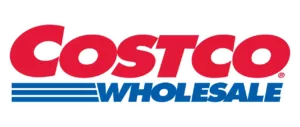Hazard Communication Training Online In 2024: Role and Benefits
Are you tired of risking your employees’ safety due to inadequate hazard communication training? Traditional classroom training can be a logistical nightmare in today’s fast-paced work environment.
The solution lies in the power of online learning. Discover how hazard communication online training can empower your workforce, boost safety, and streamline compliance.
Also, access the 11 best hazard communication training online at Coggno.
Save Thousands Of Dollars With Coggno Prime Subscription
Why Hazard Communication Training Matters?
Hazard communication is the cornerstone of workplace safety. It is more than a legal requirement; it is also a moral obligation to protect employees from harm. By understanding the risks associated with hazardous chemicals, employees can make informed decisions, prevent accidents, and safeguard their health.
Also Read: Hazard Communication: The Key to Workplace Safety
The Role Of Hazard Communication Online Training
Traditional classroom training often falls short in today’s busy work environment. Online training offers unparalleled flexibility, allowing employees to learn at their own pace, anytime, anywhere. This accessibility ensures that everyone receives the critical information they need to stay safe.
Hazard Communication Training Must Include
- A comprehensive overview of the Hazard Communication Standard (HCS)
- Detailed explanations of Safety Data Sheets (SDS)
- Proper labeling of hazardous chemicals
- Effective communication of chemical hazards
- Emergency procedures
- Hands-on practice with hazard identification and control measures
Benefits Of Hazard Communication Certification Online
Earning a hazard communication certification is a testament to an employee’s commitment to safety. It validates their knowledge and skills, enhancing their credibility and job prospects.
Benefits of hazard communication certification online include:
- Flexibility: Employees can learn at their own pace, fitting training into their busy schedules.
- Accessibility: Training materials are available 24/7, eliminating geographical limitations.
- Cost-Effective: Reduces travel expenses and instructor fees.
- Engagement: Interactive elements like videos, simulations, and quizzes enhance learning.
- Measurable Results: Online platforms track employee progress and performance.
Choosing The Right Hazard Communication Online Training Course
With countless options available, selecting the ideal course can be overwhelming. Consider the following factors:
- Course Content: Ensure the course covers all essential HCS elements and aligns with your industry-specific requirements.
- Course Provider: Look for reputable providers with a proven track record in safety training.
- Certification: Verify if the course offers a recognized certification to enhance credibility.
- Interactive Features: Choose courses that incorporate multimedia elements for effective learning.
- Cost and Support: Evaluate the overall cost, including additional fees, and assess the quality of customer support.
11 Hazard Communication Online Training Courses
Below are the best hazard communication courses available at Coggno:
Course 1: Introduction to GHS and Hazard Communication: The Basics for Employees
This course will help you learn the basics of GHS and hazard communication. It will also help you adhere to strict guidelines for the safe production, transportation, handling, use, and disposal of hazardous materials. This course is available for employees on the Coggno platform and is accessible on most popular devices and browsers.
Course 2: Hazard Communication Awareness Course
This concise 25-minute course will give employees essential knowledge on preventing accidents and protecting their health. Aligned with OSHA standards and industry best practices, it delves into the critical components of the Global Harmonized System (GHS), including the 16 sections of a Safety Data Sheet and the significance of each pictogram.
Beyond the basics, employees will also learn signal words, precautionary statements, and the nuances of chemical labeling. They will use an interactive simulation to reinforce learning and develop practical skills in interpreting labels and responding to chemical spills.
Course 3: Hazard Communication Standard In The Pharmacy Course
This course will protect your pharmacy staff from hazards. Learn how to fulfill your employer’s duty to inform employees about workplace hazards and safeguard their well-being. This concise 20-minute course, designed for on-the-go learning, offers flexible, optional narration and bite-sized information segments. With this course, you will understand the fundamentals of GHS, the classification process for hazard criteria, and how to apply these principles specifically within a pharmacy setting.
Course 4: Hazard Communications (Course)
This 30-minute course will help you discover the serious risks of workplace hazards and learn how to prevent them. It delves into OSHA regulations, effective communication strategies, and the crucial skill of reading Material Safety Data Sheets (MSDS). With this course, you’ll gain a deep understanding of hazard types, develop a proactive approach to safety, and contribute to a healthier work environment for everyone.
By the end of this course, you’ll be equipped to identify potential dangers, implement preventive measures, and confidently handle hazardous materials.
Course 5: Hazard Communication For California (US) Course
By taking this comprehensive California-specific Hazard Communication (HazCom) course, you can protect yourself and your workplace from the dangers of hazardous chemicals. This essential training equips you with the knowledge to identify, handle, and avoid risks associated with chemical exposure.
Along the way, you’ll also learn about the intricacies of Proposition 65, the federal and California HazCom Standards, and the proper use of Safety Data Sheets (SDS). This course is ideal for all California employees and comes with a certificate.
Course 6: Hazard Communication – Safety Data Sheets (US)
Understanding Safety Data Sheets (SDS) is crucial for working safely with hazardous chemicals. This concise 9-minute course empowers both managers and frontline workers to use SDS information effectively. They will also learn to navigate SDS sections, identify potential hazards, and implement safe handling practices. This course will help you protect yourself and your colleagues from chemical-related risks. The course also offers certification.
Course 7: Hazard Communication – Labels (US) Course
Labels are your first line of defense against chemical hazards. This course breaks down the essential elements of GHS labels, ensuring you can quickly and accurately identify potential risks. It will also help you learn to interpret labels with multiple hazards and stay updated on upcoming compliance deadlines. This 9-minute course, also available in Spanish, comes with a certificate and empowers you to make informed decisions and prioritize safety when handling chemicals.
Course 8: Hazard Communication Awareness
This comprehensive course equips you with the essential knowledge to handle hazardous materials confidently. This course teaches you to decipher Safety Data Sheets, understand hazard pictograms, and recognize chemical labels.
Aligned with OSHA standards, this interactive training goes beyond the basics, covering signal words, precautionary statements, and best practices for chemical management. Real-world scenarios and simulations reinforce learning, ensuring you’re well-prepared to prevent accidents and protect yourself in the workplace.
The course comes with a certificate.
Key takeaways:
- Understand the Global Harmonized System (GHS)
- Master the Safety Data Sheet (SDS)
- Identify and interpret hazard pictograms
- Learn proper chemical labeling and handling
- Develop practical skills through interactive simulations
Course 9: Hazard Communication Awareness (US)
This essential course provides a solid foundation in hazard communication. It is also available in Spanish and empowers you to work safely with chemicals. With this course, you’ll learn the basics of the HazCom Standard, understand your rights and responsibilities, and master the use of Safety Data Sheets (SDS) to identify potential risks. This 16-minute course teaches you to prevent accidents and protect your health. Upon completion of the course, you’ll earn a certificate.
Key takeaways:
- Understand the purpose and structure of the HazCom Standard
- Learn your role in chemical safety
- Effectively use Safety Data Sheets to identify hazards
- Recognize and interpret chemical labels
Course 10: Hazard Communication – Pictograms (US)
This concise hazard communication program lets you quickly and easily understand potential hazards. You will also learn to recognize and interpret standardized symbols used on labels and Safety Data Sheets (SDS). This 5-minute module provides essential knowledge to protect yourself and others from chemical risks. After completing the course, you will earn a certificate.
Course 11: Hazard Communication for Construction, Parts 1-2 (US)
This comprehensive two-part course equips construction workers with essential knowledge to handle hazardous materials safely. You will learn about the importance of written hazard communication programs, understand chemical labels, and master using Safety Data Sheets (SDS). This course, also available in Spanish, empowers you to identify risks, protect yourself, and comply with safety regulations.
Completing both parts will give you the certificate and the confidence to work safely with chemicals commonly found on construction sites.
FAQs On Hazard Communication
Q1. What is hazard communication?
Hazard communication is the process of conveying information about chemical hazards to employees. It includes labeling, Safety Data Sheets (SDS), and employee training.
Q2. Why is hazard communication important?
Hazard communication protects employee health and safety by providing information about potential chemical risks.
Q3. Who is responsible for hazard communication?
Both employers and employees share responsibility for hazard communication. Employers must implement a written hazard communication program, provide training, and ensure access to SDS. Employees must follow safe work practices and participate in training.
Q4. What are the elements of a hazard communication program?
A hazard communication program typically includes a written plan, inventory of hazardous chemicals, SDS, labeling, employee training, and recordkeeping.
Q5. How often does hazard communication training need to be conducted?
Hazard communication training should be provided to all employees upon initial assignment, whenever a new chemical hazard is introduced, and at least annually.
Q6. What is the Hazard Communication Standard (HCS)?
The Hazard Communication Standard (HCS) is an OSHA regulation that requires chemical manufacturers, importers, distributors, and employers to provide employees with information about chemical hazards.
Q7. What are the key components of the HCS?
The HCS includes requirements for labeling, Safety Data Sheets (SDS), and employee training.
Q8. How does the HCS protect workers?
The HCS protects workers by ensuring they have the information needed to recognize, evaluate, and control workplace chemical hazards.
Q9. Is there a specific format for Safety Data Sheets (SDS)?
The HCS mandates a 16-section format for SDS to ensure consistency and clarity in providing chemical information.
Q10. How often is the HCS updated?
OSHA periodically updates the HCS to incorporate new scientific information and align with the Globally Harmonized System of Classification and Labeling of Chemicals (GHS).
Q11. What should be included in hazard communication training?
Hazard communication training should cover chemical hazards, labeling, Safety Data Sheets (SDS), protective measures, and emergency procedures.
Q11. Who should receive hazard communication training?
All employees exposed to hazardous chemicals should receive hazard communication training.
Q12. How often is hazard communication training required?
Hazard communication training should be provided to all employees upon initial assignment, whenever a new chemical hazard is introduced, and at least annually.
Q13. Can hazard communication training be conducted online?
Hazard communication training can be delivered effectively online, offering flexibility and accessibility.
Q14. What are the benefits of hazard communication training?
Hazard communication training benefits include increased employee awareness of chemical hazards, improved safety practices, reduced accidents, and compliance with regulations.
Q15. What information must be included in hazard communication training?
Hazard communication training must include information about chemical hazards, labeling, Safety Data Sheets (SDS), protective measures, emergency procedures, and the employer’s hazard communication program.
Q16. Who is responsible for ensuring that hazard communication training is provided?
The employer is responsible for ensuring all employees receive appropriate hazard communication training.
Q17. How can employers verify that employees have received hazard communication training?
Employers can verify training through attendance records, training certifications, and employee sign-offs.
Q18. Is hands-on training required for hazard communication?
While not always mandatory, hands-on training can enhance learning and retention of hazard communication information.
Q19. Can hazard communication training be combined with other safety training?
Hazard communication training can be integrated with other safety training topics, provided all required elements are covered.
Q20. What is the difference between hazard communication and hazardous communication training?
Hazard communication refers to the overall process of conveying chemical hazard information, while hazardous communication training specifically focuses on educating employees about these hazards.
Q21. Who should conduct hazardous communication training?
Qualified supervisors, safety professionals, or external trainers can conduct hazardous communication training.
Q22. How can the effectiveness of hazardous communication training be evaluated?
The effectiveness of hazardous communication training can be evaluated through employee knowledge assessments, observation of safe work practices, and incident reduction.
Q23. What are some common challenges in delivering hazardous communication training?
Common challenges include employee engagement, regulatory changes, and accommodating diverse learning styles.
Q24. How can technology be used to enhance hazardous communication training?
Technology can be used to create interactive training modules, provide access to SDS online, and facilitate knowledge sharing among employees.
Q25. What is a hazard communication certification?
A hazard communication certification validates an individual’s knowledge and competency in hazard communication principles and practices.
Q26. Who can benefit from a hazard communication certification?
Hazard communication certification benefits safety professionals, supervisors, and employees who handle hazardous chemicals.
Q27. How can I obtain a hazard communication certification?
Hazard communication certifications can be earned through various training programs and certification bodies.
Q28. What are the advantages of having a hazard communication certification?
Certification demonstrates expertise, enhances credibility, and improves job prospects in safety-related roles.
Q29. Does the law require a hazard communication certification?
While not always legally mandated, a hazard communication certification can be valuable for individuals and organizations committed to safety excellence.
Choose Coggno For Your Hazard Communication Training Needs
Coggno offers a comprehensive library of hazard communication online training courses designed to meet the diverse needs of your workforce. Our courses are engaging, informative, and compliant with OSHA regulations. With Coggno, you can ensure your employees have the knowledge and skills to work safely with hazardous chemicals.
Don’t gamble with your employees’ safety. Invest in hazard communication training today. Contact Coggno to learn more about our online training solutions and how we can help you with our hazard communication training.
Maximize Training, Minimize Costs With Coggno Prime



















